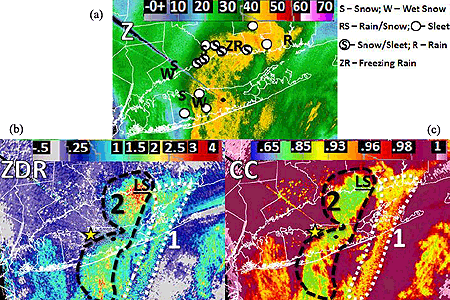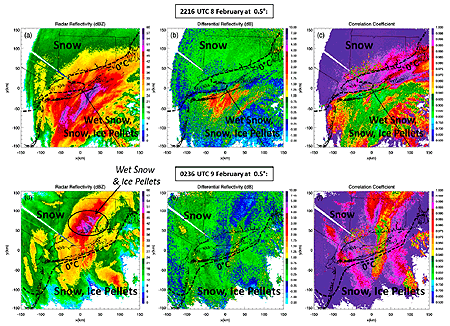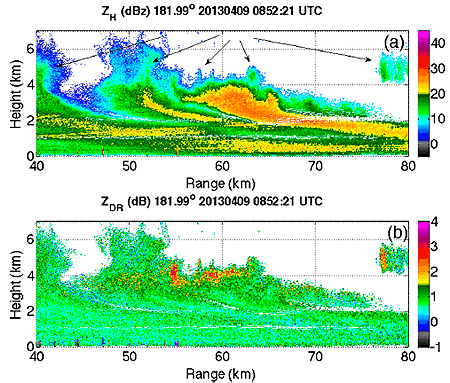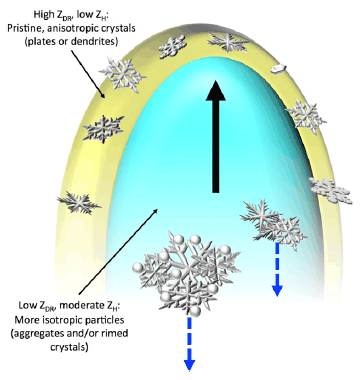Highlighting Key Sessions at AMS 2024
The Daniel Keyser Symposium at the 104th AMS Annual Meeting will advance the science of synoptic-dynamic meteorology and celebrate the contributions of Prof. Daniel Keyser, a multifaceted researcher and educator. Keyser (pictured at right), a Fellow of the AMS and recipient of the AMS Meisinger Award and Lorenz Teaching Excellence Award, is well-known for his seminal work on cold-front updrafts and for co-originating the Shapiro–Keyser cyclone model.
We spoke with Symposium Co-Chair David Schultz, Professor of Synoptic Meteorology at the University of Manchester, about why the AMS community is celebrating synoptic-dynamic meteorology and Daniel Keyser’s contributions to the field. Here are a few excerpts:

How has Daniel Keyser influenced the field of meteorology?
Dan is one of those people who don’t get the attention they deserve. He’s worked on so many things and worked with so many people. Yet he’s done so in a very humble way.
A lot of what we know about cold fronts is from the work that Dan did. Dan’s PhD was about understanding the circulation of cold fronts and the dynamics of that interaction with the boundary layer in driving the updraft air at the leading edge of the cold front. Later, he developed the concepts of vector frontogenesis and partitioning Q/F vectors into front-normal or front-parallel flows, which help us diagnose the frontal-scale circulations and the larger synoptic-scale circulations in which they are embedded. Also, the concept of the Shapiro–Keyser cyclone model is now commonly taught in meteorology programs. The region of high winds called the sting jet, which is common in North Atlantic cyclones that may impact western Europe, only occurs in Shapiro–Keyser cyclones.
Not only has Dan been a great researcher, but he’s a great teacher at all levels, undergraduate and graduate. Much of my teaching philosophy comes from my time at Albany, from Dan and Lance Bosart. All four of us on the program committee, and so many others, have been influenced by Dan’s education over the years.
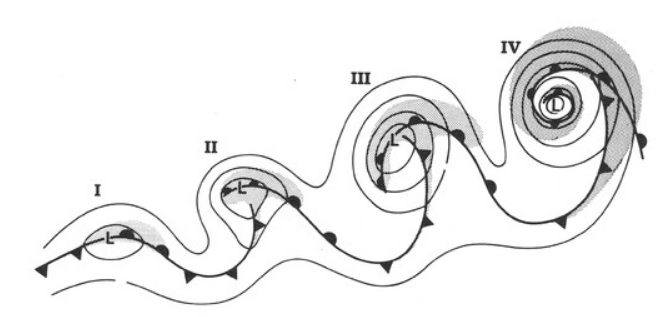
Give us a few highlights of the Symposium’s program.
The first session gives a perspective on Dan’s career, including Dan’s work on wildfires and how he’s influenced others. Wildfire enthusiasts will want to check that out. The second session is called “Jets and Cyclones,” the meat-and-potatoes of Dan’s work. There will be a number of talks about various aspects of fronts, on the frontal scale but also up to the planetary scale, and how things like predictability and planetary-scale circulations in different climates affect the relationship between things like precipitation and fronts. Then, the third session will feature prominent mid- and senior-career-level people speaking about fronts and frontal circulation, zooming in on the smaller scale.
Session four is about fronts and precipitation, and it closes with Dan’s own presentation. Sub-seasonal effects, precipitation extremes, convection—for anyone interested in severe, hazardous, or extreme weather (for example, the flooding in California), that will be an important talk.
Why is a symposium on synoptic-dynamic meteorology so important right now?
Synoptic-dynamic meteorology is where meteorological research started, and weather forecasts are better because of our research. Now more than ever, people need to understand the dynamics of extreme weather and take a more interdisciplinary approach to weather systems. There’s a lot of hazardous weather out there, losses from weather events are increasing, and of course many people will experience climate change through its impacts on certain weather events. So synoptic-dynamic meteorology still lies at the heart of the problems that humanity faces and learning how to mitigate them. Yet, despite its importance, we’re at this point where we synoptic-dynamic meteorologists have to fight for recognition and institutional support.
That’s one of the things that Dan really wanted to emphasize in his talk at the end of the day: “A Personal Perspective on the Continuing Importance and Value of Doctoral Education in Synoptic-Dynamic Meteorology.” His talk will help people outside synoptic-dynamic meteorology see how these talks all day during the Symposium relate to the importance of synoptic-dynamic meteorology and to societal resilience in general.
The Daniel Keyser Symposium will be held Monday, January 29, 2024 at the AMS 104th Annual Meeting, in Baltimore and online; it will feature invited presentations, a poster session, and a dinner with Keyser as the guest of honor. Learn more about the Symposium and view the program.
